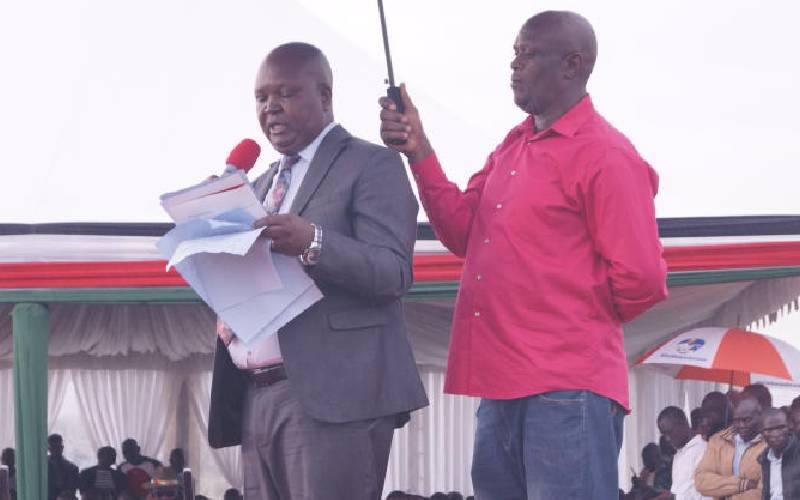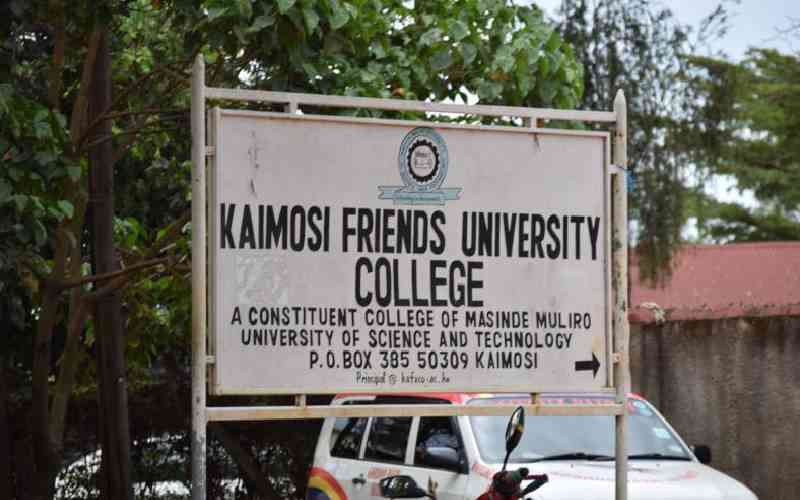Kenya: Jane Muthiga had long wanted to make a mark in Kenya’s education sector. And rather than just dream about what a difference she could make, in 2011, she decided to do something about it: she set up her own television station.
Her plan was to create alternative learning opportunities for students, particularly girls, who get pulled out of school for reasons ranging from early marriage to school fees arrears.
“I started out with video conferencing and transmitting short-range TV signals in Nairobi’s Korogocho area,” Ms Muthiga said.
Daily battles
And in September 2012, after daily battles facing down the hurdles in her way, she launched her own TV station, Elimu TV, at an event that got the attention of then ICT Permanent Secretary Bitange Ndemo.
“I had a chance to have a brief chat with him and shared the vision I had for the education sector,” Muthiga said.
“With 57 per cent of high school pupils not transiting to university, I knew I had to step in to close this growing gap.”
Muthiga is just one of the more than 40 local free-to-air television investors — who broadcast content that viewers do not have to pay for — hoping to draw an audience by addressing niche viewership needs.
Elimu TV has 24 teachers hired on a part-time basis, with some drawn from national schools.
“This gives students who scored poorly in their KCPE exams an opportunity to be taught by the calibre of teachers their compatriots in national schools get,” Muthiga said.
The station broadcasts all day. From 6am to noon, Elimu TV beams mathematics, physics, chemistry and biology lessons for Form One students.
“The teaching of these subjects includes the use of lots of audio-visuals, such as charts and graphs, to enhance students’ understanding,” Muthiga said.
Form Two sessions run from noon to 6pm; Form Three sessions from 6pm to midnight; and the Form Four syllabus is taught in the wee hours of the night up until 6am.
The station works closely with the Ministry of Education through the Kenya Institute of Curriculum Development (KICD) to ensure content is aligned with the approved curriculum.
“After we record all the lessons, we normally take the videos to KICD for approval before sharing them with our partners, Signet, who then air them through our TV signal to students,” Muthiga said.
Stay informed. Subscribe to our newsletter
Her vision is to be Kenya’s biggest audio-visual content producer in the country. She plans to begin recording videos for sale to bring in additional revenue for the station.
The lessons are normally 20 minutes long and are also uploaded on the social media site, YouTube.
Through an SMS platform, students can send their feedback on the lessons they have watched or post questions on the station’s Facebook and Twitter pages.
Elimu TV plans to set up a call centre to add value by providing real-time responses to students asking questions on the subjects featured.
TARGET AUDIENCE
Farmers TV, another free-to-air TV station, has similar plans, although it targets a different audience.
“Our target audience is anyone who is a farmer in the country,” said its founder, Jane Muhotho.
She was inspired to start generating content on farming in 2012 on realising farmers had limited access to information that would help them increase farm yields or take better care of their livestock.
“We currently run three programmes. There’s Shamba la Vijana, a programme that highlights what the youth are doing in farming. Then there is Experts View, where we get a successful practitioner in a particular field, for instance, rabbit farming, who advises viewers on rabbit rearing, including feeding, disease prevention and slaughtering,” said Ms Muhotho.
“We also have Success Stories, which features farmers who have made it big with their farming initiatives.”
The challenges
But it has not been smooth sailing for free-to-air TV investors.
They each have to pay a monthly charge of between Sh185,000 and Sh200,000 to Signet, owned by State-broadcaster KBC, in transmission charges because they do not own their own infrastructure.
This has been a challenge for investors — such as Joy TV, Heritage TV, Youth TV, Mother & Child TV — who are yet to draw large enough audiences to attract advertising that would make their businesses more economical.
“We are also key investors in the digital migration process; content providers are key in the entire journey. We have invested a lot of money in setting up infrastructure to make our stations a reality,” said Muhotho.
The country’s three main independent television stations KTN (Standard Group), NTV (Nation Media Group) and Citizen TV (Royal Media Group) also face being saddled with transmission charges, despite having invested more than Sh40 billion in infrastructure over their years of operation.
The three media houses, whose stations have been off air for more than two weeks, are lobbying the Government for more time to switch to digital broadcasts on their own content carrier.
Kenya is expected to migrate to the digital platform by June 17 this year in line with the global deadline.
 The Standard Group Plc is a
multi-media organization with investments in media platforms spanning newspaper
print operations, television, radio broadcasting, digital and online services. The
Standard Group is recognized as a leading multi-media house in Kenya with a key
influence in matters of national and international interest.
The Standard Group Plc is a
multi-media organization with investments in media platforms spanning newspaper
print operations, television, radio broadcasting, digital and online services. The
Standard Group is recognized as a leading multi-media house in Kenya with a key
influence in matters of national and international interest.
 The Standard Group Plc is a
multi-media organization with investments in media platforms spanning newspaper
print operations, television, radio broadcasting, digital and online services. The
Standard Group is recognized as a leading multi-media house in Kenya with a key
influence in matters of national and international interest.
The Standard Group Plc is a
multi-media organization with investments in media platforms spanning newspaper
print operations, television, radio broadcasting, digital and online services. The
Standard Group is recognized as a leading multi-media house in Kenya with a key
influence in matters of national and international interest.








